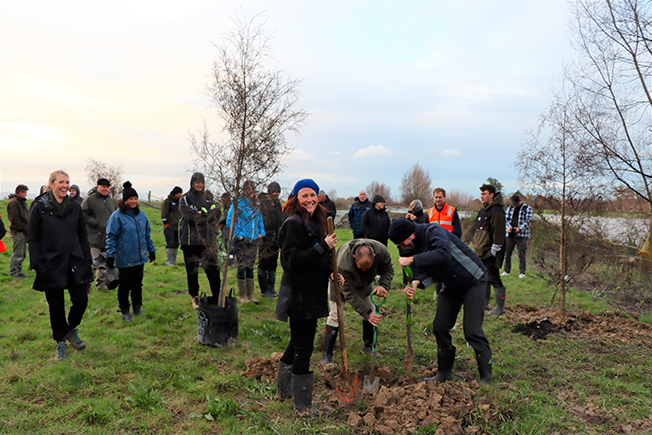The first kilometre of a 17km-long ecological corridor connecting Kopuatai Wetland with the Firth of Thames has been planted with 18,000 plants along the Piako River.
The five-year Piako River Green Corridor project, led by Waikato Regional Council, received $2.8 million through the Ministry for the Environment’s Jobs for Nature funding last year.
The project also includes planting out drainage systems between the lower Piako and Waihōu rivers to provide shade for native fish and bird species during the dry summers.
In total, a quarter of a million plants will go in the ground and 35 hectares of land will be retired along 36 kilometres of riparian margins.
Ministry for the Environment’s Secretary for the Environment, Vicky Robertson, said central to the new essential freshwater package was the principle of Te Mana o Te Wai: protecting the life supporting capacity of fresh water.
“These plants will reduce sediment by stabilising the banks and create a healthier environment for the life this awa [river] supports,” she said.
Planting started in June following a site blessing led by Ngāti Hako.
Waikato Regional Council Hauraki Coromandel restoration lead Emily O’Donnell said the project brought to life a long-held dream of iwi to reconnect the Kopuatai Wetland to Tikapa Moana (Firth of Thames).
“Most of the land is council flood scheme land, and this is an opportunity for us to meet the aspirations of iwi and showcase how planting can become part of a flood scheme without compromising capacity and integrity,” Emily said.
“We had talked about doing a project like this but under the council’s current funding it would take us probably 50-60 years to deliver.
“The Jobs for Nature funding allows us to deliver it in five years.”
Waikato Regional Council established a working group for the project, consisting of representatives from iwi, the Department of Conservation, Hauraki District Council, Fish and Game, the Thames Valley Land Drainage Advisory Subcommittee and the Waihōu-Piako Flood Protection Advisory Subcommittee.
The Hauraki Plains, known as Tikarahi by Ngāti Hako, was once a huge wetland forest dominated by kahikatea, tōtara and swamp maire.
Napa Otimi, of Ngāti Hako, said the project was “very special” to all the iwi of Hauraki.
“We’re trying to reconnect to all of those things that we’ve lost over the generations.”
All the plants will be eco-sourced with a preference to them being grown by local nurseries and social enterprises.
The project is expected to create 16 new jobs over its duration.
The $1.219 billion Jobs for Nature programme is a government initiative, creating nature-based jobs to benefit the environment and support the economic recovery following the Covid-19 pandemic.




